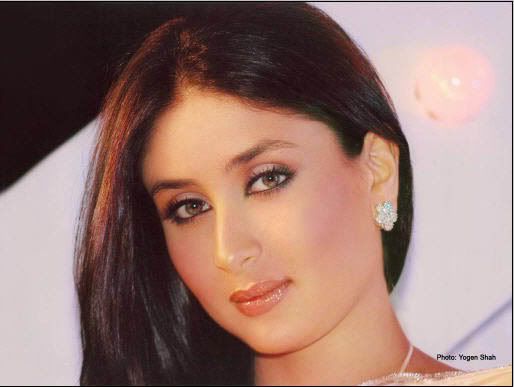This article will address the outline of the basic elements of makeup.(1, pdf)
Congenital or acquired skin blemishes that cannot be corrected by medical treatment benefit from makeup. Some examples are listed below.
Indications for cosmetic camouflage
Vascular lesions (associated with blood vessels near skin surface)
Vascular malformations (port-wine stains) and hemangiomas
Telangiectasias
Rosacea
Varicose veinsPigmentary disorders
Vitiligo
Excess pigment production after skin inflammation
Reduced pigment production after skin inflammation
Melasma
Lentigines
Solar lentigo
Nevi
Café au lait spots
Dark circles of the eyes
TattoosScars
Atrophic
Hypertrophic
Stretch marks
Burn scarsChronic skin diseases
Acne
Scleroderma
Lupus erythematosusTemporary outcomes after surgery
Laser
Dermabrasion
Chemical peels
Surgical procedures (rhytidectomy, rhinoplasty, etc.)
The elements of a good cover cosmetic
Natural looking.
Opaque.
Greaseless (so that it doesn’t stain clothes).
Waterproof.
Easy to apply.
Long lasting.
100% fragrance free.
Applicable to all skin types. Be available in different shades to match different skin colors.
Nonirritating.
Nonsensitizing.
Nonphotosensitizing (not making one more sensitive to sunlight).
Noncomedogenic.
Broad types of cover cosmetics
Face in general – foundations, concealers, powders, blushers.
Eyes – Eye foundation, eye shadow, eyeliners, mascaras, eyebrow pencils.
Lips - lipstick, lip liner crayons, foundations, glosses.
The types of foundation cover
Base: Oil-based, water-based, oil-free, water-free.
Finish: matte, semi-matte, moist semi-matte, shiny. Matte finish is most suitable for cosmetic camouflage.
Form: liquid, mousse, water-containing cream, soufflé, anhydrous (no water) cream, stick, cake, and shake lotion. The cream form is commonly used for camouflage since it can have more iron oxide for coverage, and is thicker and more occlusive because of the wax.
The base of foundation cover
Oil-based foundations – for dry skin. Water-in-oil emulsions containing pigments suspended in oil such as mineral oil, lanolin alcohol, vegetable oil (coconut, sesame, safflower), or synthetic esters (isopropyl myristate, octyl palmitate, isopropyl palmitate). They are stable as they mix with sebum and are easy to apply. Water evaporates from the foundation after application, leaving the pigment in oil on the face.
Water-based foundations – designed for dry to normal skin. Oil-in-water emulsions containing large amounts of water and a small amount of oil in which the pigment is suspended in emulsion. Contain primary emulsifiers such as triethanolamine or a nonionic surfactant and secondary emulsifiers such as glyceryl sterate or propylene glycol sterate. They are less stable than oil-based foundations but are more popular.
Oil-free foundations – for oily skin. Contain silicone derivatives (dimethicone or cyclomethicone), which are noncomedogenic, instead of animal, vegetable, or mineral oils.
Water-free foundations – different oils (vegetable, mineral, lanolin alcohol, synthetic esters) are mixed with waxes to form a cream where high concentrations of pigment are incorporated. Titanium dioxide with iron oxide, occasionally in combination with ultramarine blue, are the coloring agents used. Waterproof, opaque, well-suited for cosmetic camouflage.
A brief explanation of technical terms – An emulsion is a blend of two or more substances that normally cannot be blended (e.g., water and oil). In a water-in-oil emulsion, oil surrounds droplets of water (e.g., butter, margarine). In an oil-in-water emulsion, water surrounds droplets of oil (e.g., milk, cream). An emulsifier is a substance used for emulsification, i.e., the process that produces an emulsion. A surfactant (surface acting agent) is used as an emulsifying agent. Soap is a type of surfactant.
The procedure for applying cosmetic camouflage
Skin preparation: The skin should be cleansed and moisturized if necessary.
Neutralization/correction of color: If there is a lesion, it may have to be neutralized by using an opposite color. A green corrector is used for pink or red discoloration, lavender corrector for yellow discoloration and gold corrector for a gray blemish.
Cover cream: It will take some experimentation to find the right shade of cover cream, and sometimes two shades will need to be blended. Samples should be applied to different parts of the face; the correct sample/blend will barely contrast with surrounding skin color. The cover cream should be applied by dabbing with the third finger or a synthetic sponge rather than be rubbed onto the skin. If needed for a more natural look, special theatrical sponges (stipple sponges) can be lightly dabbed on the cover cream to create freckles or beard stubble (men).
Powder application: After the cover cream dries for 5 min (8 – 10 min for dry or aging skin), it is waterproofed and set with a colorless powder. A setting powder is not needed for very dry skin; its purpose is to absorb excess oil, and a few minutes are all it needs to do so. Excess powder is removed with a brush or cotton ball. If scars are present, then a lighter powder is used over a depressed scar since depressed scars appear darker, and conversely, a darker powder is used for elevated scars.
How to remove makeup/cosmetic camouflage
Water and soap will not remove oil-based camouflage makeup easily. These require a water-in-oil-based cleansing solution to break down and remove the oil and wax coating. Subsequently, water and soap will do the job.
References
- Antoniou, C., & Stefanaki, C. (2006). Cosmetic camouflage. J Cosmet Dermatol, 5(4), 297-301.
Comments
I can point you to an up-and-coming fashion model who is gorgeous and defies the overriding masculine trend: Irina Shayk. Take a look at her shoot in the latest Sports Illustrated swimsuit issue.
Please do not leave comments that have nothing to do with the article posted. The first posting at this blog should be used for comments that don't fit anywhere else.
Irina doesn't buck the general tendency toward masculinization in SI models. You would not call her feminine, but you can call her sexy (at least in some of her pictures).
I don't think you can classify tattoos as a pigmentary disorder but hey, its your blog. At any rate, a lot of the above issues regarding skin can be taken care of with out the use of such harmful cosmetics! American make-up is loaded with carcinogens and endocrine disrupters that may effect the woman very negatively. In summary, exercise, drink lots of water, eat well(No non-fibrous carbs or grains! Mainly vegetables, healthy meats that are free-range and antibiotic/hormone-free, nuts, and small amounts of fruit) and your body and skin will follow.
I do agree that cosmetic plays the big role in how women look like.
also u can take a look at this Indian actress. in one picture she looks hot and abit masucline awhile in the other picture she looks feminine.
so not all the time you could judge which woman is masculine or feminine by the picture.
Like this one the actress looks almost like body builder?

due to the makeup style, photoshoping, light etc.
This picture she looks like she is not the same woman on the first pic.

and on the flim her shape seems to be skinny and delicate than the fashion picture of her.

Emily: Sometimes people come to regret tattoos, and unwanted tattoos qualify as a skin blemish/a pigment problem. The issue here is not treating the blemish, but hiding it. So leading a healthy lifestyle, though recommended, is irrelevant to the article since sometimes there are skin blemishes regardless of lifestyle.
Cosmetics are not necessarily harmful. There are many alternatives, and the author makes it a point to seek cosmetics that are nonallergic, nonirritating, etc.
Zonneschijn: You fool, no one is arguing about cosmetics playing a big role in how women look like. You seriously need to learn English before leaving more comments. You should have the courtesy of leaving alone a website in a language that you are poorly versed with. Again, your comment has nothing to do with the article and has no value otherwise.
The effect you are demonstrating has little to do with makeup, photoshopping or lighting, but a lot to do with clarity of physical features as a function of posing, clothing and size of the pictures. Depending on the picture, the woman either looks masculine or of unclear masculinity-femininity. The clearest picture shows a masculinized woman, and this is unlikely due to photoediting because the woman is likely either a model or an actress. Whereas neither may be true because she has a hook nose, many Indians don’t seem to mind hook noses. If she is a model, then the homosexuals would not mind her masculinization though they will find her too bulky and would not edit the picture to add bulk. If she is an actress then she would typically play romantic roles and would be depicted lighter than she is and not made to look more muscular/masculine.
Please do not trash this site by leaving irrelevant, useless and absurd comments.
Whereas neither may be true because she has a hook nose, many Indians don’t seem to mind hook noses.
Erik : the hook nose's women cann't be pretty?? if you find hook nose can not be pretty then epicanthic fold, flat nose, piggy nose etc. also can not be pretty too? because they'd fall into disporportion facial's feature?
I think Indian do not mind hook nose. they prefer more the actor and actress with light skin or white, amber, hazel, blue or green eyes.
Is it possible that some women actually look worse after applying makeup? I think I look worse, even when it is professionally applied by a good makeup artist. It just seems to look fake and unnatural no matter what, and cover up any good features, without masking any of the bad ones. So therefore, I have given up on makeup and never wear it when I go out.
Alex: You must have blemish-free skin and a great face shape if even a professional makeup artist cannot improve your face with makeup. Please email me your pictures.
yes, most women actually look worse after applying makeup. alex, you have concisely summed up the reasons why. for stage, film, photography etc. makeup makes sense because the demands of those media are different than those of in-person socialization. for day-to-day appearance makeup creates a bizarre and artificial look that is distasteful.